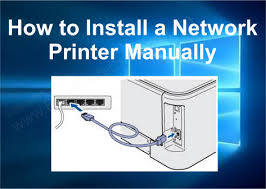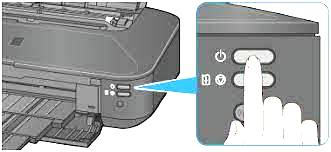How to set up and install a computer printer

A computer printer does not work until you install the included drivers and software. If you have lost the CD for your printer, you can download the drivers for your printer and use them to install your printer. A listing of printer manufacturers and links to their associated driver download pages are on our printer drivers page.
Are all printers the same?
Connecting the printer to the computer

Setup printer and install software
After connecting the printer and turning it on, you'll need to install the printer's software and drivers. Every printer should come with the software used to install a printer in Windows or your operating system.
1. After everything is plugged in, turn on the computer.
2 Insert the CD that came with the printer. If the CD does not automatically start, open My Computer, double-click the CD drive, and then click the Setup or Install file. If you have downloaded the drivers, run the downloaded setup file
3. Follow the installation wizard, and once completed, your software is installed.
4. Test the printer to make sure it is working.
Computer with no CD, DVD, or disc drive
If your computer does not have a disc drive or you lost the CD, you can download the software for your printer from the manufactures printer's driver page. Once the drivers are downloaded, you can run the file to install the drivers.
No drivers available for my operating system
Installing a printer only using the drivers
If you only want the printer to be installed and none of the extra software programs, you can only install the printer driver by following the steps below.
If you only want the printer to be installed and none of the extra software programs, you can only install the printer driver by following the steps below.
1. Open the Control Panel with the printer connected and powered on.
2.In the Control Panel, double-click the Printers or Printers and Fax icon.
3. In the Printers window, click the Add a printer icon.
4. After completing the above steps, see the Windows Printer Wizard. Click Next to start the wizard.
5. Next, you have the choice of installing a Local or Network printer. If the printer connects directly to your computer, choose Local printer attached to this computer and click Next.
6. When prompted for the printer driver location, browse to the directory of your drivers or point it to the printer CD.
Does a printer require drivers?
Yes. For a printer to communicate and work with the computer and its operating system, it requires a driver to be installed. In some situations, you can use a generic printer driver included with the operating system, but these generic drivers don't always work with all printers.
Test the printer

After installing the printer, you can use Windows to print a self-test page to help verify the printer is working.
Microsoft Windows users
1. Open the Control Panel.
2. Double-click the Devices and Printers, Printers, or Printers and Fax icon.
3. Right-click the printer you want to test and click Properties. If you do not see your printer, your printer is not installed.
4. In the Printers Properties window, click the Print Test Page button.
5. If the printer can print a test page, your printer is installed and set up properly. However, if you cannot print in other programs, the program you are attempting to print from has issues.
If the printer can print a test page, your printer is installed and working. You can configure other printer settings by opening the printer software or the Printers & scanners section in Windows.






0 Comments